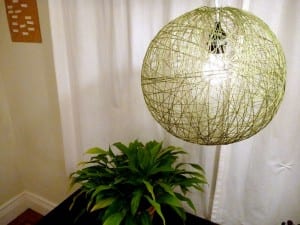Last Updated on November 11, 2025 by teamobn
Moisture can wreck walls, floors, and roofs fast. The right vapor control stops condensation, mold, and hidden rot, and helps insulation actually perform. Vapor Barriers matter because they set the safe drying direction in each climate. This guide shows you how to choose materials, place them correctly, and seal every seam. You will learn the tools, steps, and checks to install one in your home with confidence.
Contents
Vapor Barrier Basics
A vapor barrier is a material that slows water vapor diffusion through building assemblies. It’s different from an air barrier, which stops moving air. Most code groups materials by perm rating. Class I blocks almost all vapor. Class II slows it. Class III is more open. Smart membranes change perms with humidity.
Climate sets the rules. Cold zones usually want vapor control on the warm interior side. Hot-humid zones often push vapor control outward and keep interiors vapor open. Mixed and marine zones favor variable-perm layers that let assemblies dry both ways when conditions change. Roofs, slabs, and basements follow the same principle. Pick one safe drying direction.
Common options include 6-mil polyethylene, kraft-faced batts, self-adhered membranes, and smart vapor retarders. Poly is cheap but risky in mixed or hot-humid climates. Smart layers are forgiving in renovations. Whatever you use, focus on continuity. Overlap seams, tape or roll them tight, and seal around boxes and pipes. Avoid trapping moisture between two low-perm layers.

Climate Zones at a Glance
Climate sets the rules for vapor control. Each zone changes placement, perms, and materials. Use this quick guide to pick a safe drying direction and avoid condensation, mold, damage inside.
Cold and Very Cold
Keep vapor control on the interior side. Favor smart membranes or Class II kraft when walls can dry outward. Add exterior rigid foam as needed, then step down to Class III inside so sheathing stays warm. Air sealing beats thicker insulation when budgets are tight. Use rainscreens behind brick or stucco to shed moisture that has been stored.
Mixed-Humid and Marine
Aim for two-way drying. Use a smart vapor retarder at the interior to open in summer and close in winter. Skip interior poly. If you add exterior foam, meet the minimum thickness so the sheathing stays above the dew point, then use Class III inside. Vent claddings and keep interiors vapor open to handle swings.
Hot-Humid
Protect against inward vapor drive. Keep interiors vapor open with standard drywall and high-perm paints. Avoid interior poly and vinyl wallcoverings. Place the primary control layer outward with a well-detailed WRB, ventilated cladding, and, if used, exterior foam over sheathing. Focus on airtight ceilings and duct sealing to stop moist air infiltration.
Hot-Dry
Vapor loads are light, but ground moisture is not. Prioritize under-slab protection with taped 10–15 mil poly and capillary breaks. Keep walls vapor open to allow inward drying. Use rainscreens for stucco and masonry, and manage bulk water first. Interior poly is unnecessary and often risky during rare wet events.
Wall Assemblies by Climate
Wall assemblies change with climate, cladding, and insulation strategy. Get placement right so drying stays safe. Use these patterns to decide materials, insulation ratios, and where the vapor barrier belongs.
With Exterior Rigid Foam
Keep sheathing warm by meeting the minimum foam thickness for your climate. Tape foam seams and align the WRB for reliable drainage. When ratios are met, the interior can use Class III or a smart retarder, and no interior vapor barrier is needed. Add a ventilated rainscreen, especially with reservoir claddings.
Prioritize airtight drywall or sealed sheathing for the primary air control layer, and whenever an older wall shows past moisture staining or odor issues, get a mold inspection before adding new vapor-control layers. This step helps ensure the surface beneath is clean, dry, and structurally sound. Mold spores can remain dormant behind drywall or insulation and reappear when new materials trap moisture inside. A professional inspection identifies these hidden issues and provides clear guidance for remediation. Addressing mold early protects indoor air quality, preserves the durability of new finishes, and guarantees that your vapor barrier functions as intended across every season.
Without Exterior Foam
Rely on cavity insulation plus an interior smart retarder in mixed or marine zones. Use kraft-faced batts in cold zones when walls dry outward. Keep interiors vapor open in hot-humid regions. If codes demand it, place any interior vapor barrier only in cold zones and pair it with a ventilated cladding. Seal plates, penetrations, and electrical boxes to control air leaks.
Brick and Stucco Claddings
Treat brick and stucco as moisture reservoirs. Install a rainscreen gap with weeps and through-wall flashing. Choose a robust WRB, lap correctly, and protect openings with pan flashing. Use a smart interior retarder so assemblies can dry both ways when seasons swing. Keep bulk water out first, then fine-tune vapor control.

Material Options and When to Use Them
Picking vapor-control materials depends on climate, assembly, and budget. This section compares common options and explains when they excel, when they falter, and how to enhance them for durability.
Polyethylene Sheet (Class I)
Polyethylene sheet (Class I) is best under slabs and in sealed crawlspaces. Also works on the interior in frigid zones when walls can dry outward. Use 6–10 mil, overlap generously, and tape seams. Seal around posts, pipes, and rebar. Avoid pairing with low-perm exterior layers that trap moisture. Skip interior poly in mixed or hot-humid climates where inward drying matters.
Kraft-Faced Batts (Class II)
Kraft-faced batts (Class II) is a solid choice for cold climates without exterior foam. Place the kraft face to the interior and keep interior paints vapor open. Don’t slash the facing. Staple neatly and maintain contact with studs to limit convective loops. Avoid in hot-humid interiors where inward vapor drive can cause trouble behind vinyl wallcoverings.
Smart Vapor Retarders (Variable Perm)
Smart vapor retarders (Variable Perm) are great for mixed, marine, and renovation work. Tight in winter, more open in summer, so assemblies can dry both ways when needed. Install behind drywall with taped seams and detailed penetrations. Ideal when you’re unsure of future cladding or interior finishes. Pairs well with reservoir claddings when a rainscreen is included.
Self-Adhered Membranes and Tuned WRBs
Use self-adhered membranes and tuned WRBs when you need robust air and water control with a chosen vapor profile. Pick vapor-open versions for drying potential or retarding versions where exterior control is required. Perfect at tricky transitions, rim joists, and window bucks. Coordinate perm values with any interior layer to prevent a double vapor trap. Always integrate with flashings and a drainage gap.
Vapor-Retarder Primer or Paint (Class III)
Vapor-retarder primer or paint (Class III) is suitable when exterior foam meets the required thickness for your climate. Lets interiors dry while adding modest vapor control. Roll to manufacturer coverage and keep drywall airtight. Not a substitute for a true vapor barrier in very cold assemblies without exterior insulation. Works well in retrofits when you want low-disruption improvements.
Codes, Testing, and Documentation
Codes set the boundaries for safe assemblies. Testing proves performance. Documentation keeps everyone honest and speeds inspections. Use this section to meet code, verify results, and create a paper trail.
Local Codes and Climate Designations
Start with your local residential or building code. Confirm climate zone and moisture designation. Rules differ. Ask the authority which layers count as a vapor barrier. Some areas require a Class I or II interior layer in winter. Others restrict interior polyethylene. Record answers in permit notes and keep a copy on site to align inspectors and installers.
Assembly Approval and Exceptions
If your wall uses exterior foam, show the ratio that keeps the sheathing warm. That often allows a more vapor-open interior. Note exceptions like brick or stucco, sauna rooms, and pools. Include manufacturer letters for alternatives and smart membranes. Submit drawings that show water, air, and vapor layers with clear transitions at slabs, rims, and windows.
Dew Point Checks and Ratio Method
Run a dew point check during design. Keep the condensing surface above indoor dew point in cold weather. Use the recommended exterior foam percentage for your zone. If you can’t meet it, step up interior control to Class II or a smart retarder. Note the math on the plans to justify the location of your vapor barrier.
Air Leakage Testing
Air leaks move more moisture than diffusion. Schedule a blower door test before drywall. Target the local ACH50 standard. Use smoke and infrared to find leaks at plates and boxes. Seal now. Document results with photos of repairs. Better air control lowers the burden on any vapor layer you install.
Moisture Monitoring and RH Logging
Verify performance after move-in. Place simple RH and temperature loggers in problem rooms. Check the attic and crawlspace through the seasons. Use a pinless meter to track trends at baseboards and sheathing. If readings climb, hunt bulk water first before blaming the vapor barrier. Keep a spreadsheet of readings linked to weather notes.

Inspection Readiness and Photo Logs
Create a photo log as you build. Capture WRB laps, taped seams, and penetrations. Photograph the interior layer before drywall at corners and rims. Tag images by location and date. Save spec sheets for tapes, primers, and membranes. Good records prove the vapor barrier was detailed correctly and speed inspections.
Owner Hand-Off and Maintenance
Field changes happen. Record what changed, why, and who approved it. Update drawings to ensure future repairs don’t compromise critical control layers. Bundle warranties and care guides. Include repaint guidance and limits for vinyl wallcoverings in humid zones. Good closeout protects the assembly and reduces callbacks.
Conclusion
Installing a vapor barrier isn’t about plastic alone. It’s a system that pairs climate-aware placement with airtight detailing. Seal seams, protect penetrations, and keep one safe drying direction. Verify with blower door and moisture checks, then document the findings for code compliance and future repairs. Do it right and you’ll prevent mold, protect the structure, and boost comfort for years.






